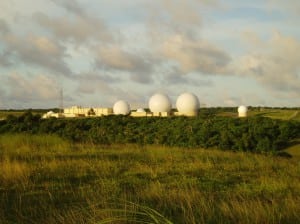General Dynamics Nears Completion of NASA’s New SGSS C2 Infrastructure
[Via Satellite 11-10-2015] General Dynamics and a consortium of industry partners have finished Increment A4 of NASA’s Space Network Ground Segment Sustainment (SGSS) program A4. This increment includes the ground antenna and associated control systems that are housed in a space Network Operations Center (NOC). The team also completed an end-to-end demonstration of the Increment A4 capability to maneuver a simulated Tracking and Data Relay System (TDRS) satellite.
The next SGSS increment to transition from the development phase into system integration and test will be Increment A5. This increment focuses on operator interfaces in mission operation centers and is scheduled for mid-2016. The final increment is A6, and is on track for completion in late 2016. The new SGSS ground system architecture will ensure the Space Network will continue to provide global space-to-ground telecommunications and tracking coverage for Earth orbit and near-Earth space flight missions, accommodating larger quantities of data and higher data rates.
“This milestone, combined with program achievements earlier this year, means that more than 80 percent of the new software needed to bring SGSS online in 2017 is complete,” said Manny Mora, vice president and general manager of Space and Intelligence Systems for General Dynamics Mission Systems. “The General Dynamics team continues to work closely with its NASA partners to drive these program schedule achievements.”
In parallel with the work done on Increment A4, the team successfully completed final acceptance testing of the narrowband and wideband modems used to send and receive space information from the ground to the satellite and back. The team also delivered the telemetry, tracking and control software that manages flight operations aboard all three generations of TDRS satellites.
